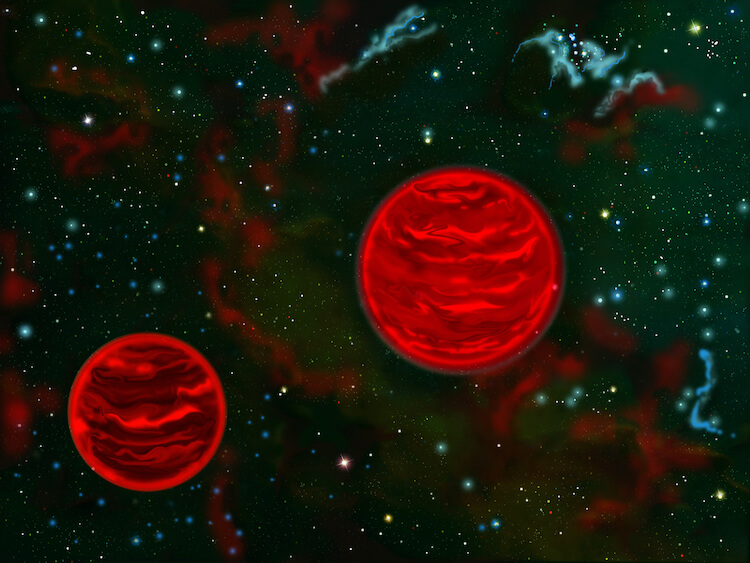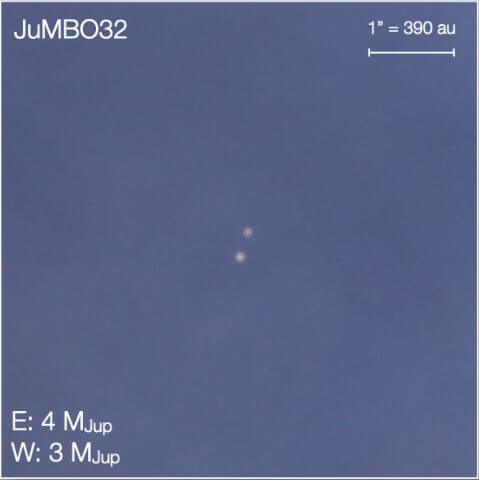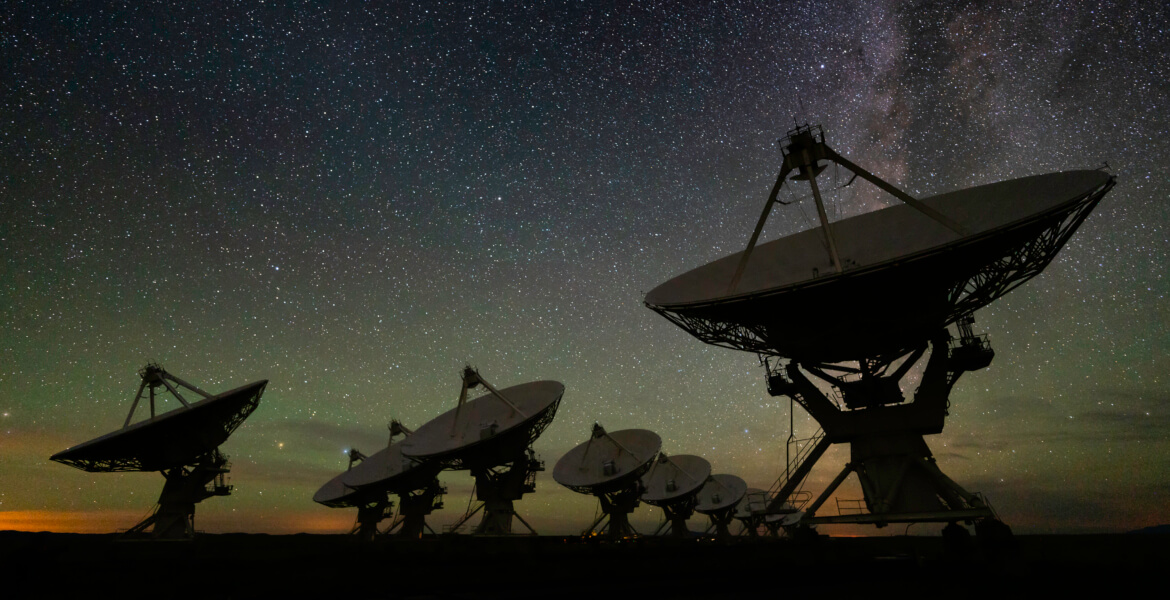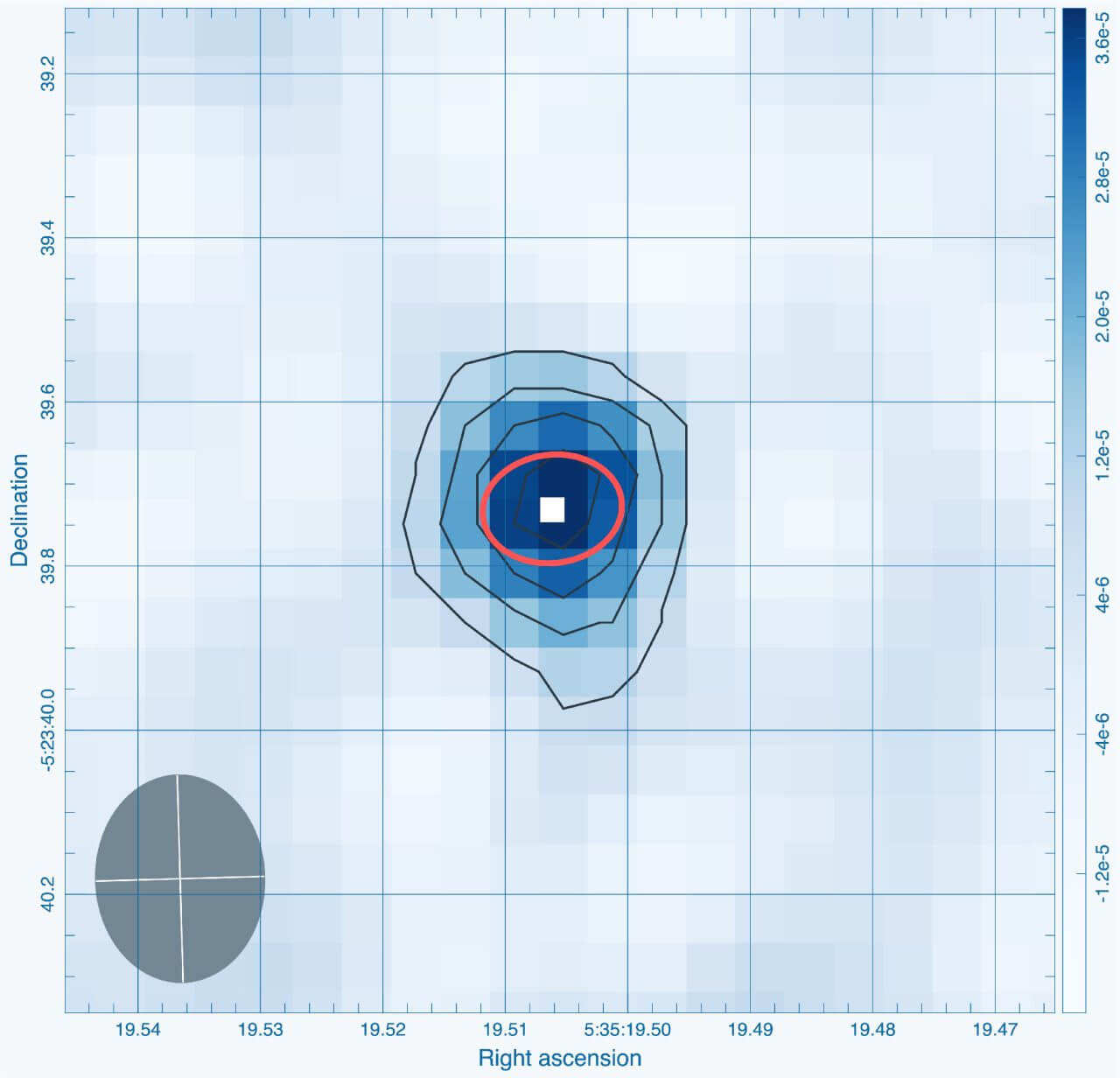It does not revolve around any star.Free floating planet“Created? Conventional theory suggests that it is the result of cataclysmic dynamics within a planetary system, in which case free-floating planets would exist on their own.
A research team led by Luis F. Rodriguez, Laurent Lonard, and Luis A. Zapata of the National Autonomous University of Mexico has discovered a free-floating binary star that was just discovered in 2023 using the James Webb Space Telescope. Planet candidates areVLA (Very Large Interferometer Karl Jansky Radio Telescopes)“Noted. As a result, the only oneJumbo 24“Successfully observed,Further evidence of a floating planet in a binary relationshipIt was received. The formation of free planets in binary star relationships cannot be well explained using traditional formation theory, so they attract attention as interesting objects for observation.

■ Aren’t there binary stars on free planets?
When you think of a planet, you probably imagine a celestial body orbiting a star like the Sun. But in reality, many celestial bodies have been found that have masses similar to that of planets that do not orbit specific celestial bodies such as stars. here they are”Free floating planet(Free floating planet).
It is believed that free planets originally arose as planets orbiting stars. However, if the planets get too close together and their orbits are disturbed, it is thought that some of the planets will break free from the star's gravity and begin to wander. For this reason, free planets are also called “rogue planets.”
Planets that experience such catastrophic gravitational interactions lose their satellites and companion stars, and free-floating planets are thought to have no binary stars. If the binary stars are close together, the probability of them being in a binary relationship is small, but it is currently considered impossible to distinguish such close binary stars by observation. For these reasons, it is currently considered impossible to find binaries of free planets.
■Several candidates for a free-floating binary planet have been found


However, in 2023, Samuel G. Pearson and Mark G. McCaughrian of the European Space Agency (ESA) discovered a candidate planet for a floating planet with the possibility of a binary star, JuMBO.(※)” has been announced by 42 groups. These candidates were originally present as initial candidates in the Hubble Space Telescope's trapezoid observation data, and were discovered through additional observations with the James Webb Space Telescope, and have been listed as strong candidates. Two of the 42 pairs are triple binaries, and all are estimated to be binary stars separated by billions to tens of billions of kilometers.
*…It is an abbreviation for the phrase “Jupiter Mass Binary Object,” which literally means “a body with a double mass of Jupiter.”


However, the discovery of any binary star candidates cannot be said to be conclusive at this stage, so additional observations were necessary. Therefore, Dr. Rodriguez and his three-member research team conducted additional observations on these megaorganisms using VLA.
As a result, the only oneJumbo 24We have succeeded in obtaining monitoring data regarding “. JuMBO 24 is estimated to be two free-floating planets, each about 11.5 times the mass of Jupiter, located 4.2 billion kilometers (28 AU) from each other. Of the 42 massive objects included in the 2023 study, JuMBO 24 has the heaviest total mass and is the closest to Earth. It is currently unknown whether this property is the only reason for the success of monitoring.


Analysis of radio monitoring data by the VLA showed that there were two radio sources in the direction of JuMBO 24, and that there were actually two celestial bodies. Who is this,JuMBO 24 is likely a floating planet in a binary relationshipit will be. As mentioned previously, the presence of free-floating planets in binary stars has not been predicted by traditional formation theories, and the existence of JuMBO 24 remains a major mystery. JuMBO 24 will be an interesting target to observe in solving the mystery.
It is also possible that other candidate objects cannot be observed simply because they are not there, but this may also be due to differences in observational wavelengths. The Webb Space Telescope performs observations in the infrared region, and the VLA performs observations in the radio region. Observations using radio waves have lower resolution than other wavelengths, so it is possible that radio waves are indistinguishable from noise and are simply invisible. Alternatively, it is also possible that the performance of the VLA was inadequate or that the monitoring was not compatible with the environment of the area being monitored. The reason why the other binary star candidates cannot be detected will become clear from additional observations later.
■ JuMBO 24 contains many puzzles
Besides being a binary star, JuMBO 24 also has other mysteries. For example, the radio intensity emitted by JuMBO 24 is much higher than the radio emission of a free-floating planet expected from its infrared radiation. It is not known whether binary stars are the cause of the strong radio emission or whether there are other characteristics.
In addition, analysis of observational data from ALMA, which monitors at millimeter and submillimeter wavelengths between the VLA and the Webb space telescope, did not find any JuMBOs, including JuMBO 24. This may simply be due to a lack of resolution in the observational data, so Future observations may yield more interesting data. Future feedback will be awaited.
source
Written by Riri Aya

“Travel maven. Beer expert. Subtly charming alcohol fan. Internet junkie. Avid bacon scholar.”






More Stories
The ranking of the best survival horror games selected by the IGN US editorial team has been released! Resident Evil RE:2 ranked first
Enjoy a hot cigarette while looking at whales and tropical fish under the sea ⁉︎ “Ploom Dive” is an amazing spatial video experience using Apple Vision Pro
Apple Watch now supports sleep apnea, watchOS 11 released – Impress Watch